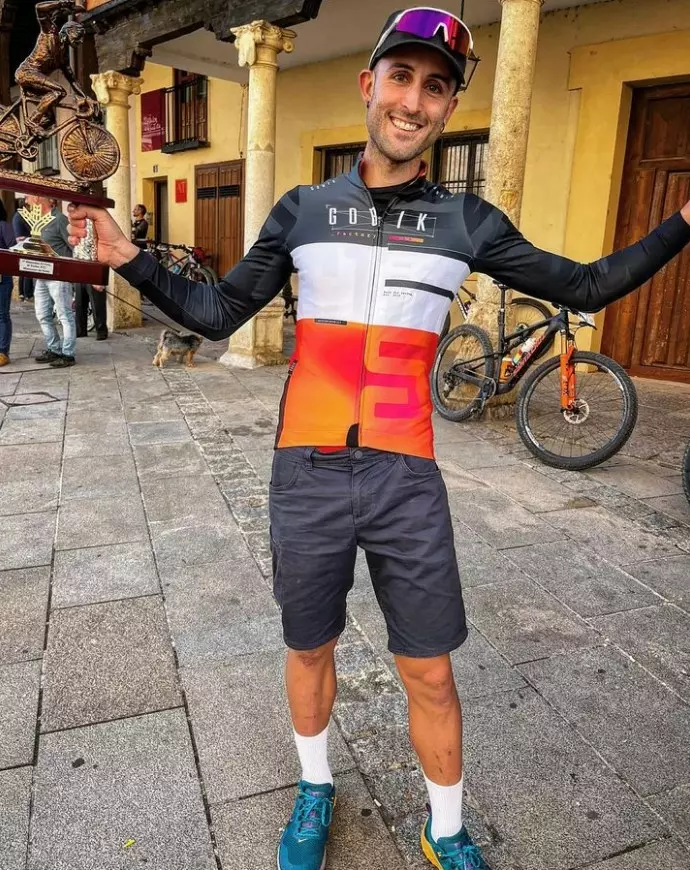First, we had a chance to talk to Pau Marza, who is a personal trainer by profession. But perhaps more importantly, he is a connoisseur of Titan races. He has participated numerous times in the Škoda Titan Desert Morocco and the Škoda Titan Desert Almeria, where he won the queen stage in 2022. This April he will be taking part in the Škoda Titan Desert Morocco.
How much training does it take to safely complete a multi-stage race like the Titan Desert?

P. M.: Ideally, at amateur level, you should be able to train four to five days a week, with a continuity of about six months, in order to bring about certain changes in your metabolism.
The training should focus on both low-intensity endurance riding and high-intensity sessions. The proportion of each depends on the type of athlete, the athlete’s goal in the race and the type of metabolism of the individual.
Which type of training do riders typically underestimate when preparing for the Škoda Titan Desert Morocco?
P. M.: Many amateurs spend too much time at low intensity and their metabolism is then not prepared for the real demands of the race. There are many moments where the terrain forces you into a glycolytic zone where you really need to fight hard. If you haven’t spent enough time at this intensity, you will feel empty very quickly. I recommend that you put yourself in the hands of an expert when it comes to training for this race.
Are there some bike-handling skills that cyclists should practice to be ready for the sand?
P. M.: Weight distribution on the bike, knowing how to ride the bike in soft areas, gripping the handlebars without stiffness.
What are some specific strength exercises that can help prepare cyclists for the demands of the race?
P. M.: It’s a race where we spend 95% of the time sitting down, and where there are many soft zones. It is very important to work on the core and the gluteus medius. An example of two very effective exercises to cover this would be planks and squats.

What should the last few training weeks before the race look like?
P. M.: Riders should focus only on polishing skills that they were trying to improve in the months before. Training sessions should be relatively easy. The goal is to make yourself feel strong and prepared, but most importantly to put yourself in a positive mindset. You win this race with your head rather than your legs.
How should cyclists approach pacing during the race to avoid burning out too soon?
P. M.: Don’t get carried away by the pace that is set at the start of the race. It’s typically way too fast because everyone thinks they have to push to be in a good group and to be carried. This is a very common mistake that is costly later on in the race.
How important is proper bike fit and equipment in a cyclist’s preparation for the race?
M. T.: The bike is one of the key elements in the success of the race. A lightweight, full-suspension bike with the right gearing and the right tyres are of vital importance.
What other pieces of gear are essential when you want to succeed at the Titan Desert?
M. T.: Without a doubt, clothing that fits well to avoid chafing, nutrition during the race, hydration and, above all, rest after the stage.
Does navigation play a role? How to prepare for this element of the race?
M. T.: The Škoda Titan Desert Morocco differs from other races in that it allows navigation. Although it is possible to complete the race without leaving the proposed route, navigation allows us to “play” in the desert, to carve our own path and cut a few kilometers of each stage. The best way to prepare for the event is to know perfectly how your GPS works and to study the stages in advance using the available cartography.
As you can see, preparing for the Škoda Titan Desert races requires a comprehensive approach that encompasses training, equipment, and mental fortitude. A strong foundation in endurance, bike-handling skills, proper nutrition, and strategic navigation are essential. By taking the advice of seasoned experts like Pau Marza and Manuel Tajada, cyclists can enhance their training regimens and gear selection to better face the unique challenges this race presents.




